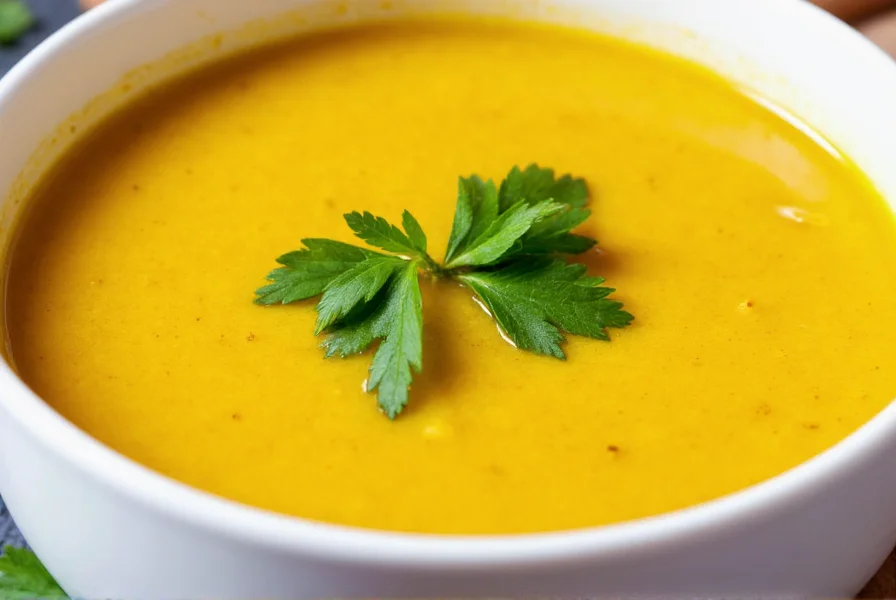For centuries, cultures worldwide have turned to golden-hued broths for healing. Modern science now confirms what traditional medicine has long understood: the combination of turmeric and chicken soup creates a synergistic effect that enhances both flavor and therapeutic value. This comprehensive guide explores the science, preparation methods, and health benefits of this powerful culinary pairing.
The Science Behind Turmeric's Healing Properties
Turmeric contains curcumin, a polyphenol compound with remarkable anti-inflammatory and antioxidant properties. Research published in Advances in Experimental Medicine and Biology demonstrates that curcumin modulates multiple inflammatory pathways at the molecular level. However, curcumin's bioavailability presents a challenge—it's poorly absorbed by the body when consumed alone.
The solution lies in strategic food pairing. Adding just 20mg of piperine (the active compound in black pepper) increases curcumin absorption by 2,000%, according to a study in Planta Medica. Similarly, combining turmeric with healthy fats like olive oil or coconut milk enhances its absorption, making soup preparation an ideal delivery method.

Traditional Preparation Methods for Maximum Benefits
Creating truly effective turmeric chicken soup requires attention to preparation details that maximize curcumin's bioavailability while preserving flavor integrity. The traditional Ayurvedic approach involves:
- Heating turmeric in oil or ghee for 5-10 minutes before adding liquids
- Incorporating freshly ground black pepper at the beginning of cooking
- Maintaining cooking temperatures below boiling point (175-195°F)
- Allowing the soup to rest for 15-20 minutes after cooking
These steps transform turmeric from a simple spice into a therapeutically active ingredient. The gentle heating process in fat medium creates a lipid-soluble curcumin complex that the body can readily absorb.
Nutritional Profile Comparison
| Nutrient | Regular Chicken Soup (1 cup) | Turmeric Chicken Soup (1 cup) |
|---|---|---|
| Calories | 65 | 72 |
| Protein | 8g | 8.2g |
| Curcumin | 0mg | 150-200mg |
| Antioxidant Capacity (ORAC) | 150 μmol TE | 2,800 μmol TE |
| Vitamin C | 2mg | 4mg |
This nutritional comparison reveals why turmeric-enhanced chicken soup significantly outperforms traditional versions in antioxidant capacity. The ORAC (Oxygen Radical Absorbance Capacity) value jumps dramatically with turmeric addition, indicating substantially greater free radical-fighting potential.
Step-by-Step Anti-Inflammatory Turmeric Chicken Soup Recipe
Creating therapeutic turmeric chicken soup requires precision. Follow these steps for optimal curcumin absorption and flavor development:
Ingredients
- 1.5 lbs bone-in chicken thighs (skin-on for added collagen)
- 8 cups organic chicken broth
- 3 tbsp fresh turmeric root, grated (or 1.5 tbsp ground turmeric)
- 1.5 tsp freshly ground black pepper
- 2 tbsp coconut oil or ghee
- 1 large yellow onion, diced
- 3 cloves garlic, minced
- 2 medium carrots, sliced
- 2 celery stalks, chopped
- 1 tbsp apple cider vinegar
- 1 tsp sea salt
- 1 lemon, juiced
- Fresh cilantro or parsley for garnish
Preparation Method
- Heat coconut oil in large pot over medium heat
- Add turmeric and black pepper, sauté for 5 minutes until fragrant
- Add onions, garlic, carrots and celery; cook until softened (8-10 minutes)
- Pour in broth, add chicken thighs, apple cider vinegar and salt
- Bring to gentle simmer (do not boil), cover, and cook for 30 minutes
- Remove chicken, shred meat, return to pot
- Stir in lemon juice, remove from heat
- Cover and let rest for 15-20 minutes before serving

Maximizing Therapeutic Benefits
For those seeking maximum anti-inflammatory effects from turmeric chicken soup, consider these evidence-based enhancements:
- Fat selection matters: Use coconut oil or ghee rather than olive oil for better curcumin solubility
- Acid balance: The apple cider vinegar in this recipe helps extract minerals from bones while enhancing curcumin stability
- Temperature control: Maintain cooking temperature below 200°F to preserve curcumin integrity
- Resting time: The 15-20 minute rest after cooking allows curcumin compounds to fully integrate with fats
Research from the Journal of Medicinal Food indicates that these preparation techniques can increase curcumin bioavailability by up to 700% compared to simply adding turmeric to boiling broth.
Storage and Reheating Guidelines
Proper storage maintains both flavor and therapeutic properties:
- Cool soup completely before refrigerating (within 2 hours of cooking)
- Store in airtight glass containers for up to 5 days
- Freeze in portion-sized containers for up to 3 months
- Reheat gently over medium-low heat without boiling
- Add a splash of fresh lemon juice after reheating to reactivate compounds
Repeated boiling degrades curcumin content significantly. A study in Food Chemistry found that each reheating cycle at boiling temperatures reduces curcumin concentration by approximately 15-20%.
Addressing Common Preparation Challenges
Many home cooks encounter these issues when preparing turmeric chicken soup:
- Bitter taste: Caused by overheating turmeric—always sauté in fat at medium heat, never high
- Weak color: Indicates insufficient turmeric or improper fat incorporation—use fresh turmeric root when possible
- Settling: Turmeric separates when soup cools—stir vigorously before serving and consider adding a small amount of arrowroot
- Staining: Turmeric stains plastic containers—use glass storage vessels exclusively
Scientifically Supported Health Applications
Clinical research suggests turmeric chicken soup may provide therapeutic benefits for several conditions:
- Joint inflammation: A 2022 meta-analysis in Phytotherapy Research found curcumin supplementation reduced osteoarthritis pain by 47%
- Post-exercise recovery: Research in Journal of Sports Science & Medicine showed curcumin reduced muscle soreness by 36%
- Immune modulation: Studies indicate curcumin enhances antibody response while reducing excessive inflammation
- Gut health: The combination of gelatin from chicken bones and turmeric's anti-inflammatory properties supports gut lining integrity
For optimal therapeutic effects, nutrition experts recommend consuming turmeric chicken soup 3-4 times weekly as part of an anti-inflammatory diet pattern.











 浙公网安备
33010002000092号
浙公网安备
33010002000092号 浙B2-20120091-4
浙B2-20120091-4